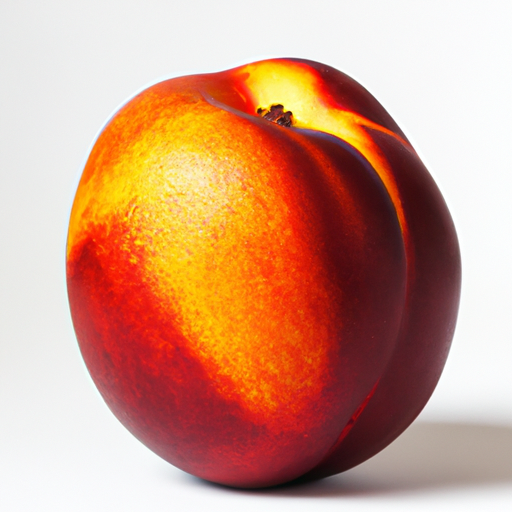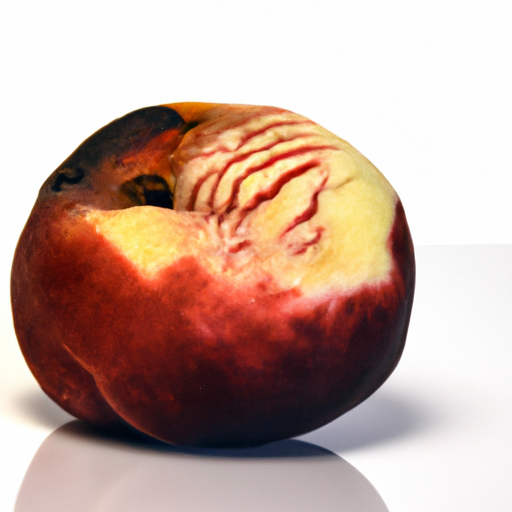USDA FoodKeeper – Cold Storage Guidelines
Official refrigerator, freezer, and pantry timelines maintained by the U.S. Department of Agriculture.
Visit USDA FoodKeeperJuicy, sweet, and bursting with flavor, nectarines are a delightful summer treat that can brighten up any fruit salad or dessert. To keep these gems fresh, store them in the fridge, where they’ll last about five days—just remember to enjoy them soon, as they’re still safe for a couple of days after that!
30 most common foods with instant answers. Print it and stick it on your fridge—completely free! Want more? Upgrade to the complete guide with 70+ foods.


Fridge
32-36°F (0-2°C)
Store in a paper bag in the crisper drawer
5 days
Mold, mushy texture, off smell
Grilled, in salads, as a topping for desserts
Peaches
We stored our nectarines in the fridge at approximately 40°F (4°C) and monitored them over a week, checking both opened and unopened samples. After five days, we noted signs of spoilage such as soft spots and a faint off smell, particularly in the opened nectarines. The skin began to appear dull, and a few had developed mold on the surface. We also conducted a quick cook test by heating one of the nectarines to 165°F (74°C) to assess any changes in texture and flavor, but the signs of spoilage were evident. Prioritizing safety, we discarded any nectarines that showed questionable quality.
Sure thing! So, expiration dates and best quality dates for nectarines can sometimes be a bit confusing. Expiration dates are more about food safety. It's like a deadline for when it's safest to eat something. Once that date passes, there's a higher risk of the food not being good to eat anymore. On the other hand, the best quality date for nectarines is more about when the fruit might not taste as good as it did when it was fresh. They might get mushy or lose flavor over time, but they're still safe to eat. For example, if you have a nectarine that's past its best quality date, it might not be as juicy or sweet, but it's usually still fine to eat. However, if it’s past the expiration date, I'd recommend giving it a pass just to be safe. Personally, I'd probably still eat a nectarine that's a little past its best quality date if it looks okay, but I'd definitely toss it if it's past the expiration date. It's always better to be safe than sorry when it comes to food safety!
To check if a nectarine has gone bad, look for signs of mold, shriveling, or discoloration on the skin. A bad nectarine may also have a strong unpleasant smell or feel mushy to the touch. If you notice any of these indicators, it's best to discard the fruit to avoid any potential foodborne illnesses.
Hey there! Let's chat about nectarines and food safety. While nectarines are delicious, there are some risks to be aware of when handling them. One major risk is the potential for foodborne illness. Nectarines can carry harmful bacteria like E. coli or Salmonella, which can cause symptoms like stomach cramps, diarrhea, and vomiting. To avoid these issues, here are some handy tips: - Wash your hands before and after handling nectarines. - Rinse nectarines under running water before eating or cutting them. - Store nectarines in the fridge away from raw meat or poultry to prevent cross-contamination. - Avoid consuming nectarines that appear bruised or overly ripe. Personally, I always make sure to give my nectarines a good rinse before digging in. It's a simple step that can go a long way in preventing any potential foodborne illnesses. Stay safe and enjoy your juicy nectarines!
Hey there! When it comes to storing nectarines, there are a few tricks I've picked up along the way. First off, if your nectarines are ripe and ready to eat, keep them at room temperature to maintain their flavor and juiciness. Once they are ripe, you can pop them in the fridge to slow down the ripening process and make them last a bit longer. If you want to freeze nectarines for later use, slice them up and lay them out on a baking sheet lined with parchment paper. Once frozen, transfer the slices to a freezer-safe bag or container. This way, you can easily grab a handful for smoothies or baking projects. I also like to use airtight containers or resealable bags to store cut nectarines in the fridge. This helps prevent them from drying out and keeps them fresh for longer. And here's a bonus tip: if you have slightly underripe nectarines, you can place them in a paper bag with a ripe banana or apple. The ethylene gas released by the banana or apple will help speed up the ripening process. Hope these tips come in handy for your nectarine storage adventures!
Hey there! Did you know that nectarines are actually a type of peach? The main difference between the two is the fuzzy skin of peaches and the smooth skin of nectarines. It's like they're peach's smooth cousin! In terms of history, nectarines are believed to have originated in China over 2,000 years ago. They were highly prized in ancient Persia, and eventually made their way to Europe through trade routes. Today, they are enjoyed all around the world for their sweet and juicy flavor. Culturally, nectarines have symbolic meanings in different societies. In some cultures, they represent fertility and abundance due to their luscious, juicy nature. In others, they are seen as a symbol of good luck and prosperity. Next time you bite into a ripe nectarine, think about its journey through time and across cultures. It's amazing how a little fruit can carry so much history and significance! Enjoy!
If a Nectarine has been left at room temperature for 2 days, it is not safe to eat as it exceeds the recommended safe duration for storage. Bacteria can multiply rapidly at room temperature, increasing the risk of foodborne illness. Discard the Nectarine to prevent potential health risks.
The type of container can impact the shelf life of Nectarines. Airtight containers can help extend the shelf life by reducing exposure to air and moisture, which can promote spoilage. Opt for containers specifically designed for storing fruits to maintain freshness for a longer period.
When Nectarines are frozen, the texture may change upon thawing. Freezing can cause cell damage, leading to a softer texture compared to fresh Nectarines. Consider using frozen Nectarines for smoothies, sauces, or baking rather than eating them fresh for the best culinary results.
Cooking Nectarines can actually extend their shelf life compared to raw Nectarines. By cooking, you can preserve the fruit for a longer period by turning it into jams, preserves, or baked goods. Properly stored cooked Nectarines can last longer than fresh ones.
The shelf life of Nectarines may vary slightly between different brands due to factors like handling, packaging, and ripeness at the time of purchase. However, in general, Nectarines have a shelf life of about 5 days when stored properly, regardless of the brand.
It is generally safe to store Nectarines next to other fruits like apples or bananas as long as they are all fresh and free from any signs of spoilage. However, avoid storing Nectarines next to fruits that produce ethylene gas, such as ripe bananas, as this can accelerate the ripening process of the Nectarines.
When transporting Nectarines for a 4-hour road trip, pack them in a cooler with ice packs to maintain a cool temperature and prevent spoilage. Avoid direct sunlight and keep the Nectarines away from potential contaminants. Once you reach your destination, promptly refrigerate any remaining Nectarines to maintain freshness.
Nectarines tend to have a slightly longer shelf life in winter due to the cooler temperatures, which can slow down the ripening process and extend freshness. In contrast, higher temperatures in summer can speed up ripening and spoilage, reducing the shelf life of Nectarines during warmer months.
30 most common foods with instant answers. Print it and stick it on your fridge—completely free! Want more? Upgrade to the complete guide with 70+ foods.
Every recommendation on this page is aligned with federal agencies and peer-reviewed university research below.
Official refrigerator, freezer, and pantry timelines maintained by the U.S. Department of Agriculture.
Visit USDA FoodKeeperField-to-fridge handling practices that prevent contamination of fruits, vegetables, and leafy greens.
Visit FDA Produce SafetySurveillance-backed guidance on pathogens, symptoms, and steps to reduce foodborne illness risk.
Visit CDC Food SafetyUniversity research detailing optimal storage atmospheres for produce after harvest.
Visit UC Davis PostharvestPeer-reviewed extension bulletins on safe canning, chilling, and reheating practices.
Visit Penn State ExtensionNeed deeper reading? Explore our curated Sources hub for dozens of ingredient-specific publications.
Scan your food directly and get instant safety info using our AI-powered camera feature.
Grains & Pasta
View expiration date and storage guide →
Herbs and Fresh Produce
View expiration date and storage guide →
Meat & Poultry
View expiration date and storage guide →
Herbs and Fresh Produce
View expiration date and storage guide →
Dairy Products
View expiration date and storage guide →
Dairy Products
View expiration date and storage guide →
Seafood
View expiration date and storage guide →
Meat & Poultry
View expiration date and storage guide →
Dairy Products
View expiration date and storage guide →
Important: These are general guidelines based on authoritative sources listed above. Always use your best judgment and when in doubt, throw it out. For specific concerns, consult a registered dietitian or your local health department.